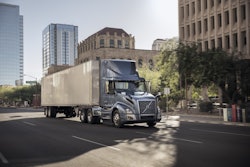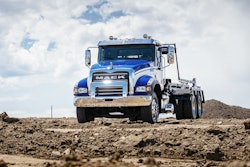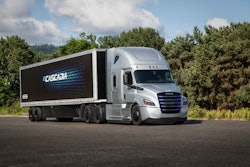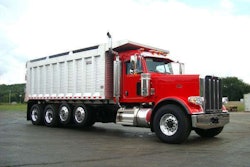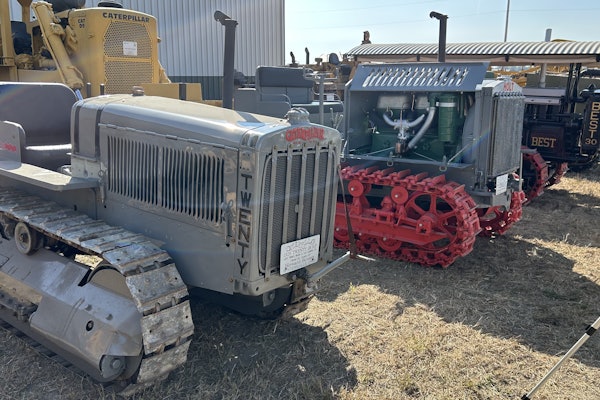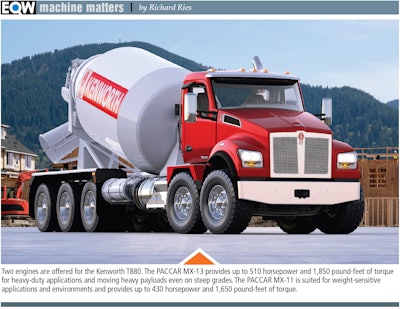
A return to normalcy
Perhaps the best news for those seeking to invest in new trucks is that the lead time has normalized. Part of the reason is that dealerships are better at working within the system, says Kurt Swihart at Kenworth. “Orders have tapered off somewhat from last year, but the backlog is still very strong. To better manage demand, many dealerships purchased stock build slots in advance that can be easily converted to custom orders.”
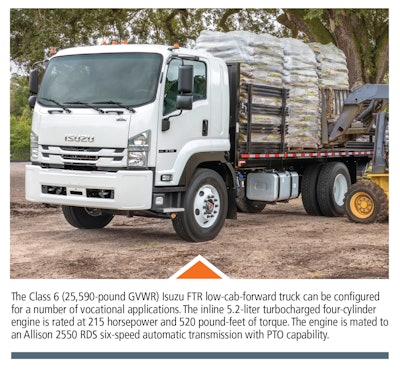
We’re seeing what statisticians call the regression to the mean. Things above or below the mean (average) eventually turn around and head back toward the mean, and truck sales are doing exactly that. But these statistical curves rarely stop at the mean; they rarely even pause on their way past. So where’s the truck market heading?
“The market is slowing quite a lot,” says Magnus Koeck with Volvo Trucks North America. “It’s clear 2020 is going to be much slower.” Koeck says vocational sales tend to be less volatile than over-the-road unit sales.
Electrification
Truck manufacturers are making several electrification moves, some of which may reach the vocational segment.
Daimler Trucks North America offers two Freightliner electric trucks, the eCascadia and the eM2. The eCascadia is a Class 8 tractor designed for local and regional distribution and drayage, which means it could work well for equipment transport. Both the eCascadia and the Class 6 eM2 are planned for series production in late 2021. Both trucks are part of Daimler Trucks’ global electrified truck initiative, which is aided by the Electric Vehicle Council. The council brings together 38 Freightliner customers to identify and address potential hurdles to large-scale deployment of commercial battery electric vehicles.
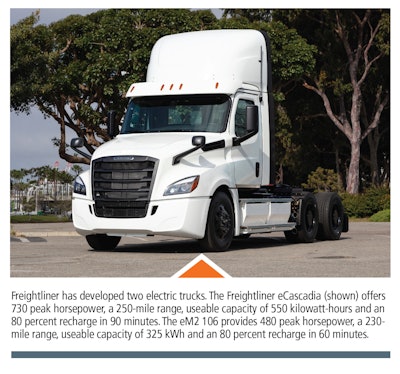
Volvo committed to electric trucks and has demonstration units in operation in California with plans to commercialize them in 2020. But while much is being made in the industry about electric vehicles, Koeck declines to call the change a disruptor. “It is, after all, just another drive system.” An analogy could be the switch from mechanical to hydraulic actuation of construction equipment. Yes, hydraulics opened up new possibilities for control and efficiency, but in the end, the tracks still turned, the blades still went up and down. Koeck says the real challenge with electric vehicles will be the demand they put on the electrical grid.
Accelerating technology
Long gone are the days when changing electronic controls required flashing the EPROMs. Nor is there any need to plug in a laptop in most cases. Nearly everything can now be done wirelessly.
One example is Mack’s new remote programming package, which uses the Mack Over The Air feature to implement remote software updates and the setting of vehicle parameters, such as maximum speed and power modes. Previously, customers could make just two parameter updates per year as part of their uptime contract subscription. The new Mack Parameter Plus package enables customers to make up to 50 parameter updates per 12-month period on all 2018 and newer Mack vehicles.

Not all advances are run by electrons. Hard parts are getting better, too.
Mack Trucks now offers mDRIVE HD 13- and 14-speed automated manual transmissions (AMT) in TerraPro concrete pumpers, marking the first time an AMT has been available in a cabover concrete pumper. The mDRIVE HD has a split-shaft PTO design. Instead of taking power from a transmission- or engine-mounted PTO, split-shaft PTOs receive output directly from the transmission, supplying higher torque for large auxiliary equipment, including concrete pumps. In TerraPro concrete pumpers, the mDRIVE HD will be paired with the 11-liter Mack MP7 engine with higher horsepower and torque ratings than equivalent models with conventional automatic transmissions. That includes the MP7’s top rating of 425 horsepower and 1,560 pound-feet of torque. The mDRIVE HD for the TerraPro concrete pumper model is available as a 13-speed direct drive or overdrive, as well as a 14-speed direct drive.
As is true for many models now, the Kenworth T680 combines technological advancements in both electronics and hardware. Updated collision mitigation enhances automatic emergency braking performance when the truck senses a potential collision. A fuel efficiency package includes updated predictive cruise control, a new 450-horsepower, 1,650-pound-feet MX 13 engine, PACCAR 12-speed automated transmission and PACCAR 40,000-pound rear axle.
Autonomy?
Truck OEMs are working hard on self-driving technology. Daimler, for example, began testing automated trucks on public roads earlier this year. This follows extensive testing on a closed test loop. The on-road testing takes place in southwest Virginia, near the headquarters for Torc Robotics. Torc became part of the Daimler group and is described by the parent company as “a leader in automated driving technology.”
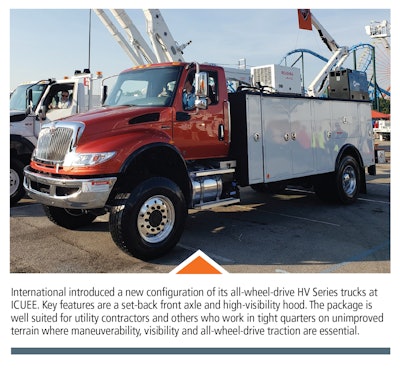
Such automation is not the type required to work with ISO 15143-3, which is what allows trucks to navigate a construction worksite and communicate with other equipment there. Certainly some technology and probably some hardware will cross over from the SAE system for use on public roads to the ISO system for worksites, but the focus is on developing the SAE version. In fact, none of our sources offered information on their development of trucks compliant with ISO 15143-3.
Trucks designed to use the SAE system will be targeted toward drayage and pickup-and-delivery markets. They may also work with concrete mixers, dump trucks going back and forth to asphalt batch plants and similar applications. But automated vocational trucks at home on the highway amid commuter traffic as well as at the construction site amid excavators and dozers would seem to be a distant vision.

Ongoing challenges
Perhaps the biggest challenge is managing human resources. “Many across the trucking industry are having trouble attracting and retaining the right people to fill open opportunities,” says Horton. “That’s true whether the jobs are behind the wheel or in the service shop.” Or in the cab of equipment.
Koeck says that one key in fleet management is to stay informed by closely monitoring the market. Changes occur quickly and frequently. Watch the big institutions and agencies. The search string “heavy truck sales forecast” will bring up dozens of resources. These entities’ forecasts, both micro and macro, tend to be accurate. Timing the purchase of trucks to market shifts can give access to aggressive pricing, purchase incentives, higher offers for trade-ins, wait times measured in weeks instead of months and a host of other advantages.
Not every aspect of fleet management is getting increasingly difficult. The fundamentals still work well. Buy the right truck, spec’ed and built the right way. Follow maintenance schedules. Get the greatest value from telematics. And through it all, work with your dealer. A dealership’s success is contingent on their customers’ success; the dealership should be eager, willing and able to help you get the most from your trucks.




